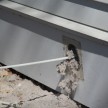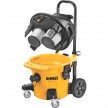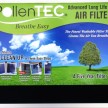How To Reduce Allergens In A Home

Image: fredtaylorart.com/allergy.jpg
TIPS TO TACKLE ALLERGENS IN THE HOME
As long as I can remember I have suffered from seasonal allergies. As Spring arrives it is often a good time to take some steps to make your house as “allergy free” as possible. This article focuses on how to reduce allergens in a home.
There are also some things you can personally do to help reduce allergy symptoms in your home. The first thing you must do is become knowledgeable about common household allergens and then find workable solutions to tackle the problem’
Here are a few tips that I follow to keep my sanity and reduce sneezing fits:
Clean Air:
1. Make sure your house is well ventilated and that all HVAC filters are changed regularly.
2. I recommend paying extra for a high quality HEPA [high efficiency particulate air] filter. Most HVAC units can be modified to accept these filters.
4. Allergen Reduction Filters- The Filtrete Ultra Allergen Reduction filter is a furnace filter that captures 90% of large allergens like pet dander and mold spores from the air passing through the filter. This filter will not support the growth of mold, mildew and bacteria and it last up to 3 months.
5. Close the windows during high pollen days, and windy days. Keep pollen outside! Change your
Turn off the fan! Limit the use of window fans that can draw pollen rich into your home
6. Hepa Air Purifier- The Hepa Air Purifier is a air purifier that filters particles in the air and removes some of the smallest microns of allergies. (dust, pollen, smoke, animal dander and dust mites) Austin Air and EZAIR are considered among the best.
The Bedroom:
Scientific studies have shown that taking allergen avoidance steps to minimize dust mite allergen exposure in the bedroom leads to a decrease in allergic symptoms and a decrease in medication requirements for people who are allergic to dust.
1. Make your bedroom as allergy free.
2. Purchase an allergen free pillow.
3. Cover your pillow, mattress and box spring with an allergy controlling pillow and mattress encasing to provide a barrier to dust mites, pet dander or other allergen particles. Change the sheets weekly.
4. Wash your sheets, blankets, bedding and clothes in hot water or with a specially-designed allergy laundry detergent that washes away dust mites and allergens in any temperature.
5. Choose allergy bedding such as hypo-allergenic pillows or have an allergy-blocking fabric exterior.
6. Vacuum the bedroom often. Hepa vacuum cleaners contain filters that remove 99.97% of the allergens that pass through it. There are many brands on the market to choose from.
7. Removing carpets and replacing with washable throw rugs will eliminate this allergy source. Hardwood flooring is the best option.
8. Limit books.
Organize the house:
1. Keep the house clutter free, the less clutter the fewer places for allergens to collect.
2. Vacuum and dust weekly, even in unused rooms. [use a HEPA vacuum]
3. Get rid of old magazines, newspapers and clothes; which gather dust and can attract and support mold growth.
4. Limit figurines and knickknacks are dust catchers.
5. Perform a thorough Spring and Fall cleaning to include cleaning carpets, walls and upholstery.
Bathroom:
1. Clean regularly too limit and remove mold buildup – a huge allergen.
2. Install and use a bathroom fan to remove shower steam and reduce humidity which helps mold thrive.
3. Ensure that the bath fan is properly vented to the outside of the house and not into your attic.
4. I use, and have installed for customers a timer switch for the bath fan. These timers should run for 20-30 minutes after you turn off the shower to remove the moist air from the bathroom.
Allergy Generators:
1. Carpets, upholstered furniture fabrics and large collections of books help create dust by the collection and break down of fibers. Vacuum regularly with a HEPA filtered vacuum.
2. If you use carpets try to purchase tightly woven, short fibers.
3. Use washable throw rugs instead of wall to wall carpets.
4. Vacuum and damp mop hardwood floors regularly.
Basement:
1. Don’t overlook the basement. I recommend running a dehumidifier year round as needed to control dampness and mold. Mold thrives in high humidity and lies dormant or dies in low humidity, a dehumidifier is a great way to control the humidity level in your home.
Learning how to reduce allergens in a home is the first step, the next one is yours!
~concord carpenter



















